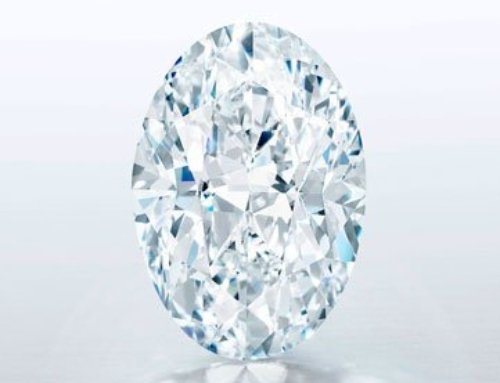Image: Art Deco Cartier bracelet – Sotheby’s
Sotheby’s is auctioning an Art Deco Cartier bracelet, from a prominent female collector, for $2 million to $3 million, at the November Magnificent Jewels Sale of Sotheby’s Geneva.
The center stone of this Art Deco Cartier bracelet is a 47.07-carat, royal-blue Burmese sapphire with high clarity, carved in the shape of a cabochon, flanked by two pear-shaped, white diamonds of 9.27 carat and 8.60 carat. The bracelet, made by Cartier in 1927, is one of several items that the Sotheby’s auction house will offer. The unnamed Asian-American collector collected the jewels for more than five decades.
“This beautiful collection of jewels and gems was clearly created with passion and pleasure, and we know that they were cherished and often worn by their owner,” says David Bennett, global chairman of Sotheby’s jewellery department. “The Art Deco Cartier bracelet is stunning in its design; the central stone is a sensational Burmese sapphire of the highest quality and colour.”
Sotheby’s will also offer a Cartier ring set with an 11.20 carat, D-colored diamond, with a pre-sale estimate of $500,000 to $600,000, and another of the jeweller that bears a 17.48 carat Burmese sapphire, valued at $350,000 to $550,000.
Characteristics of Art Deco Jewelry
Art Deco is a style that originated in 1925, a result of exhibitions at the world exhibition in Paris, France. The term Art Deco is a shortened form of the name of the event: Exposition Internationale des Arts Décoratifs et Industriels Modernes (International exhibition of modern industrial and decorative arts).
Certain design elements are consistent throughout the period, making it easy to recognize cars, fashion and even buildings. Authentic jewellery from this period was made between 1920 and 1935 and has at least one, sometimes all, of the following characteristics listed below. The jewellery styles remained popular until the late 1930s and have since resurfaced as one of the most popular antique jewellery styles.
1. Platinum or white gold
Most of the jewels from the Art Deco era were made in white gold or platinum. White gold was first presented to the public during the Art Deco era around 1915, when it was invented to combat rising platinum costs and as a result of the increasing demand for a light-colored metal. Yellow gold was very out of fashion at the time.
2. Old European cut diamond
You won’t see modern round brilliant diamonds in authentic Art Deco jewellery unless they have been reworked. You will find other incredible antique cut diamonds in it, especially the old European cut diamond.
Other common diamond cuttings for Art Deco era jewelry include antique cushion cutting, transition cutting and Asscher cutting.
3. Geometric design
Art Deco jewellery precedes the Edwardian era. For novice jewellers, it can be difficult to tell the difference between the two eras, as both are executed with platinum and antique diamonds. However, Art Deco design differs from Edwardian design in that it is more geometric and symmetrical.
Whereas the Edwardian – early century – jewelry was very strongly inspired by nature such as light and floral, Art Deco design includes more geometric shapes, less free space and a more industrial feel.
4. Calibre Cut Stones
Calibre cut stones are an important part of the Art Deco jewellery design. Calibre cut stones are custom-made gemstones that are specially cut to fit into jewelry. They are placed tightly together against other stones or metal and have a great influence on the overall design.
5. Filigree
Filigree work is characterized by small intricate recesses and has never been performed as well as in the Art Deco period. Jewelry filigree was perfected at the end of the 1920s through the use of injection moulding machines, and it was easily available in the early 1930s. These designs contain many synthetic stones, but also diamonds, platinum and white gold. It is almost impossible to recreate the sharp, refined filigree work of the 1920s, as most of the rings are made with wax moulds.
These reproductions have a softer, more imprecise look as opposed to the tight, stamped edges of authentic filigree work. Another sign that you are dealing with a reproduction? Most filigree jewelry from the Art Deco era are made with 10k or 18k white gold. If your jewelry is 14k white gold and has a yellowish tint, chances are it’s a more modern reproduction. The yellowish hue is because there are different alloys used today, different from those used in the 1920s, which makes the older gold in its natural state grayer.
Do you fancy that Art Deco Cartier bracelet even more now that you know all about Art Deco jewellery? It’s probably yours for 2 to 3 million dollars.






